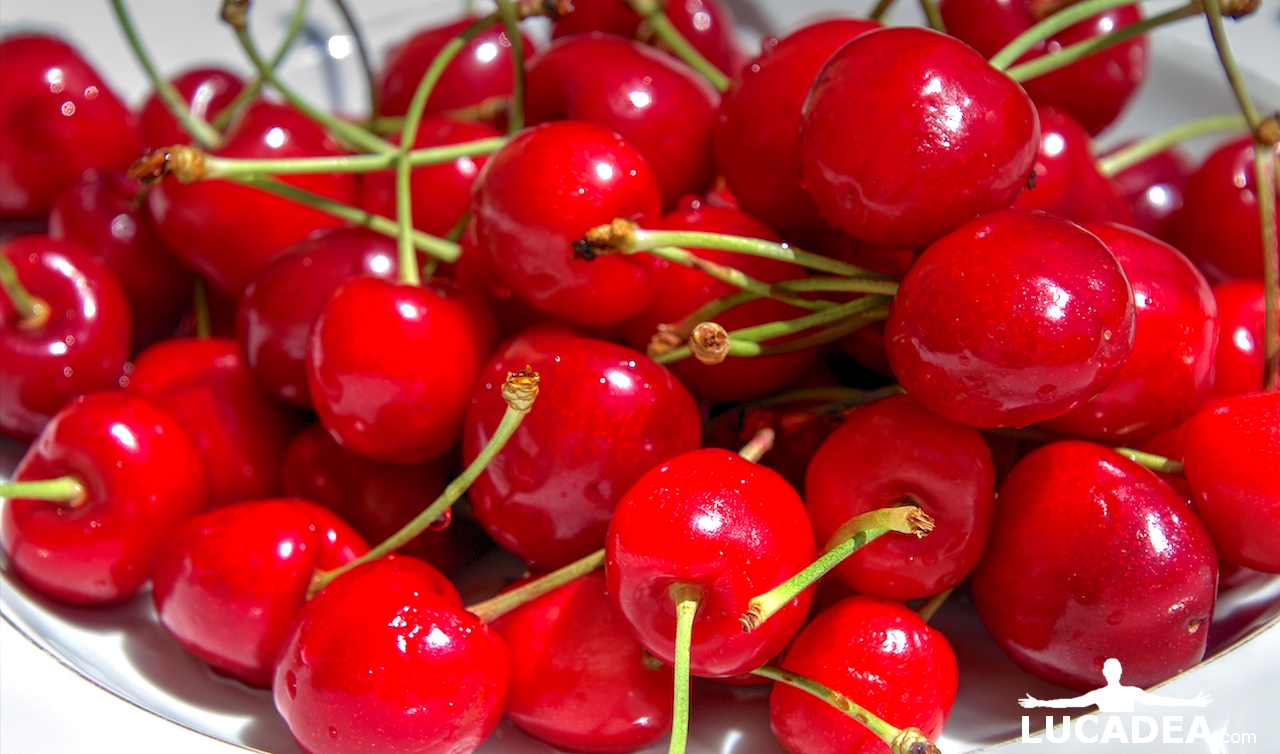Ciliegie ad inizio estate.
Uno dei frutti di stagione, le ciliegie, fanno sempre bella mostra di se su tutte le tavole italiane.
Questo bel piatto era sulla mia tavola qualche giorno fa:
Photo taken with Canon 600D and lens Tamron 16-300.
La ciliegia è il frutto del ciliegio (Prunus avium). La pianta domesticata è stata ottenuta da ripetute ibridazioni della specie botanica. Il nome cerasa presente in diversi dialetti italiani, così come quello portoghese (cereja), francese (cerise), spagnolo (cereza), rumeno (cireş), in sardo (cerexa), e inglese (cherry), deriva dal greco κέρασος (kérasos) e da qui dal nome della città di Cerasunte (o meglio Giresun), nel Ponto (l’attuale Turchia) da cui, secondo Plinio il Vecchio, furono importati a Roma nel 72 a.C. da Lucio Licinio Lucullo i primi alberi di ciliegie. Il frutto può nascere da due diverse specie botaniche. Da una parte il ciliegio dolce (cosiddetto Prunus avium), che produce le ciliegie che siamo abituati a consumare come frutta fresca. Dall’altra il ciliegio acido (Prunus cerasus) che produce amarene, visciole o marasche, genericamente definite come ciliegie acide. In questo articolo si descrive la ciliegia propriamente detta, frutto del prunus avium.
Continue on Wikipedia.
Add your own comment to this post or read here what other visitors have written.
If by chance you haven't discovered it yet, on this site, there is a nice section with lots of recipes; they are written partly by Loris, partly by Luca and international with the Asian cuisine of Dao.
I want to give you some advice for shopping: to prepare Asian rice I normally use this rice cooker, to cut this knife set Victorinox and Asian foods are almost always served in these bowls in ceramic.
If you want to know which are the best-selling cookbooks in the last hour on Amazon click here and if you are interested in finding out which are the best-selling kitchen utensils in the last hour click here.
To learn more about our privacy and cookies policy, go to the bottom of the site.
This page has had 14 views total.

